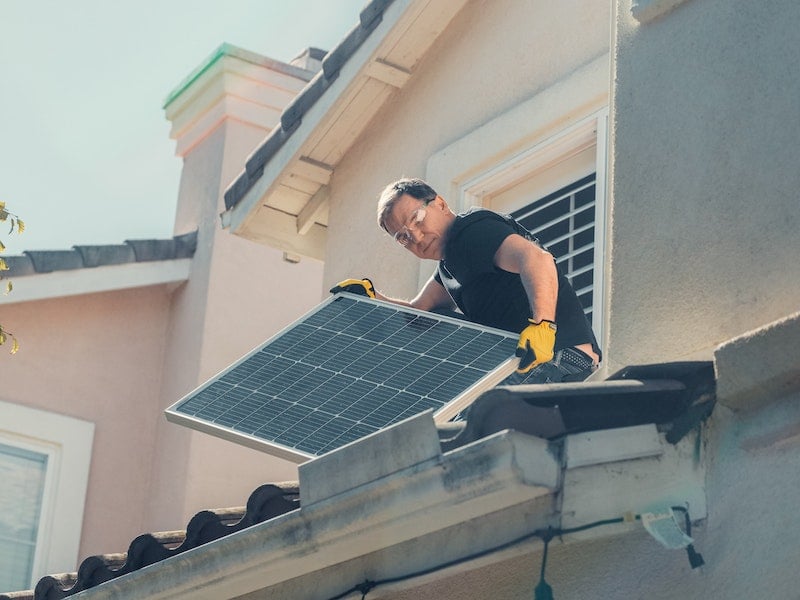
Payback Period for Solar Panels
Learn how long it will take to payoff your solar panel system.
Is solar right for you?
Find out in less than a minute.
One of the most common reasons homeowners choose to invest in solar is for financial benefits. The idea of eliminating electric bills and increasing your home value sounds great. But, solar panels aren’t cheap. That’s why determining how long it will take for your solar panels to pay for themself, a.k.a payback period is an important factor to consider before going solar.
Average payback period for solar panels
The average payback period for home solar panels in the U.S is about 8 years.
Payback periods for solar panels vary greatly depending on several factors. The biggest factors that will dictate your payback period are:
- Amount of electricity you use
- Cost of your system
- Solar incentives, rebates, and tax credit in your area
- The amount of energy your system generates
- The cost of electricity in your area
Average solar payback period by state:
How to calculate your solar payback period
Step 1: Find the average electricity usage for your home
Finding your average electricity usage per month will determine the amount of electricity you will need to generate to offset your electric bill. If you use an average of 2,000 kWh per month, then you will need to generate an average of 2,000 kWh per month.
In most deregulated states our solar calculator can pull your historical usage. If you are in a non-deregulated state you can find your average energy usage by looking at your electric bill or logging into your utility account.
Step 2: Determine the production and gross cost of your solar system
Now that you know how much energy your system needs to produce, it’s time to plan out your system. This can get complicated fast. Knowing which types of solar panels you should use, how many panels you can fit on your roof, etc. requires knowledge of solar systems. Not to mention the climate and the average amount of sunshine in your area. If you are unsure, a local solar installer can help you plan your system. This will also give you the gross cost of the system before we subtract incentives.
Step 3: Deduct solar incentives, rebates, and the federal solar tax credit
Solar incentives vary by state, city, and utility. Our database of incentives makes it easy to find which incentives are available for your home. Calculate the value of local incentives and then add in the federal solar tax credit of 26%. Now you have a total incentive deduction for your system.
Step 4: Calculate the cost of your system
So far we have calculated the cost of your solar panel system and the total value of tax credits, rebates, and the federal solar tax credit. To get the cost of your system simply subtract the value of your incentives from the total cost.
Gross cost - Incentives = Total cost
Step 5: Find your current electricity cost and forecast the future increases in electricity cost
Many states offer net metering. Net metering allows you to get a credit for each kWh of electricity you put into the grid. So if your system generates 10,000 kWh of electricity and your utility pays 10 cents per kWh you would have $1,000 in annual savings. The actual kWh rate you get paid will vary depending on your location, but it’s generally about the same rate you would pay for electricity.
Future electricity rates
Electricity rates vary because of market conditions and inflation. On average, electricity prices increase between 2-4% per year. It’s hard to predict the future price of electricity, but it’s important to keep in mind that the dollar value of bill credits you will receive will most likely increase over time as prices rise.
State without net metering
Not all states offer net metering. In some states without statewide net metering policies, there are local utility net metering options or other ways to receive bill credits for the energy you put back into the grid.
If there are no statewide or utility net metering policies in your area you will generally receive a small credit called an “avoided cost rate”. This is essentially the wholesale price for electricity and is usually much cheaper than the retail rate, but it can still go a long way toward paying for your solar panels over time.
Step 6: Calculate your solar payback period
You know the three cost factors for your solar panel system: the Gross cost of your system, financial incentives, and annual savings.
To determine your payback period follow this formula:
Gross cost - Incentives = Total cost
Total cost ÷ Annual savings = Payback period
Here’s an example.
Gross cost of $25,000 - Incentives of $6,500 = Total cost of $18,500
Total cost of $18,500 ÷ Annual savings of $2,000 = 9.25 years
Solar payback period calculator
If all this seems a little confusing, don’t worry you’re not alone. That’s why we build an intuitive solar calculator that will tell you your estimated payback period, system cost, and help you find local and federal incentives. Get started with our free solar calculator here.
Written by Thad Warren
Thad is a native Texan who has worked in the energy industry for just over 5 years.
Connect
Recent Posts
Compare Texas Solar Buyback Plans
Discover the best Texas solar energy buy back programs for 2025! Compare rates, terms, and providers to maximize savings and make the most of your solar investment.
September 2025

7 minutes

How Efficient Are Solar Panels
How efficient are solar panels compared to other types of energy generation?
March 2023

4 minutes

What You Need To Know About The California Solar Mandate
Learn how the California Solar Mandate changes how new homes are built.
July 2023

4 minutes


